Align views using elements
You can align (rotate and/or translate) a view with
another one using geometrical elements (projected as lines, circles or points).
Right-click the view that you want to re-position. A
contextual menu is displayed. Select View Positioning > Align Views
Using Elements. On this view, select the first geometrical element that
you want to align; this element may be projected either a point, a line
or a circle (aligned according to its center). A visual feedback is
provided to indicate the kind of geometry detected, and in the case
of a line, its orientation (the orientation being determined by the
proximity of the mouse pointer with one of its extremities).
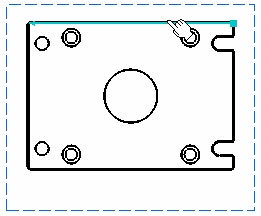
On the reference view, select the geometrical element
that you want to align.
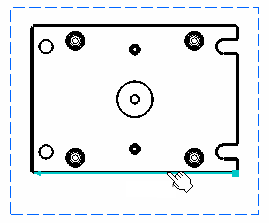
The first view is moved, and both views are aligned
according to the elements and orientations you selected. Any associative
positional link that existed between the two views prior to their alignment
is removed, and no new one is created.
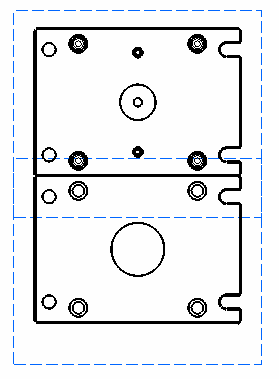

Superpose views
You can superpose a view with another one according
to their origins.
Right-click the view that you want to superpose, the
front view with dress-up, for example. A contextual menu is displayed.
Select View Positioning > Superpose. Click the view on which you want to superpose the first
view. The first view is moved and superposed to the second one.
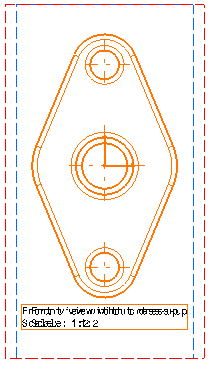
Click in the drawing, outside the views, to validate
the superposition.

Set relative view position
You can re-position a view relatively to various elements
(a line/callout, a point or the frame of a view).
Right-click the view frame that you want to re-position,
the isometric view for example. A contextual menu is displayed. Select View Positioning > Set Relative
Position.
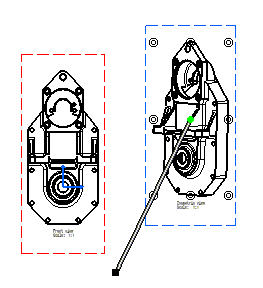
A direction positioning line appears that is related
to the isometric view. This isometric view can be positioned as desired
and relatively to the front view. Note that the isometric view is assigned
anchor points.
Select the direction positioning line end black square
point.
Once you have clicked the end square point, this point
becomes a blinking red end point and remains so until you select a point
or a view frame.
You can also click the direction positioning line. In
this case, the positioning line becomes a blinking line and remains
so until you select a line (callout line).
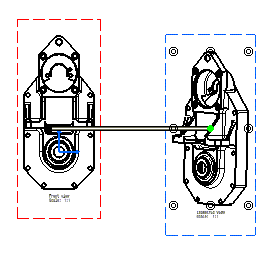
Click the edge according to which you want the isometric
view to be aligned.
Click one anchor point, for example, the bottom right
one. The view anchor point is aligned according to the green point and
thereby to the direction positioning line. As you move the cursor over the direction positioning
line, the position and length coordinates of the line appear.
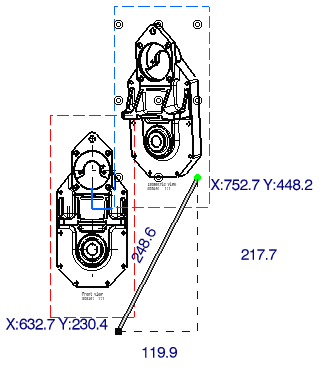
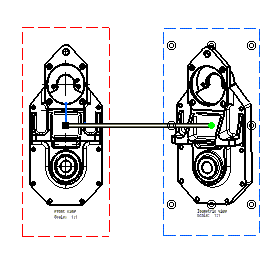
Using the green point, you can rotate the isometric
view around the front view.
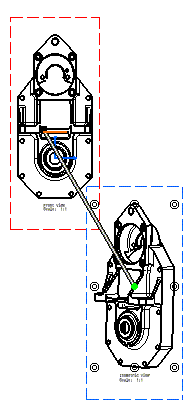
Using the direction positioning line, translate the
isometric view along the direction line and locate it at the desired
distance.
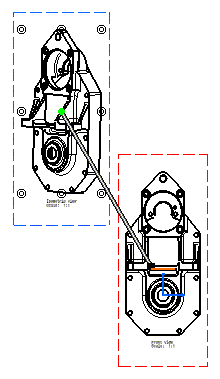
Click in the free space to validate and leave the relative
positioning mode.
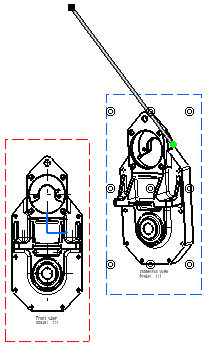
|
![]()
![]()










